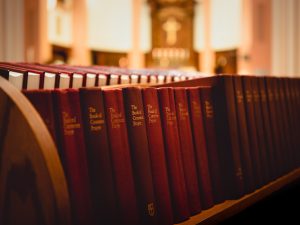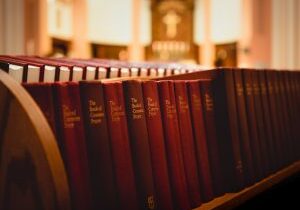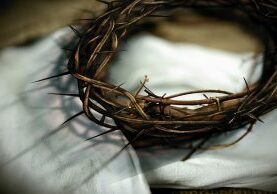Lent Guide
AMIA Communications
 What if you could simplify the Book of Common Prayer and the Church Year for those new to Anglicanism? That’s what Patrick Schlabs, Worship Pastor at St. Peter’s Church in Mt. Pleasant, South Carolina, set out to do. Here, Patrick shares his inspiration for the Rhythms Project—a two-volume guide to the Church Year that curates the Book of Common Prayer for today’s generation. The first volume of the Rhythms Project walks readers through Advent, Christmas and Epiphany, and the second volume unfolds the beauty and mystery of Lent, Easter and Pentecost. Patrick’s wife, Meg, is a graphic designer and designed the booklets, now being used by churches across The Mission.
What if you could simplify the Book of Common Prayer and the Church Year for those new to Anglicanism? That’s what Patrick Schlabs, Worship Pastor at St. Peter’s Church in Mt. Pleasant, South Carolina, set out to do. Here, Patrick shares his inspiration for the Rhythms Project—a two-volume guide to the Church Year that curates the Book of Common Prayer for today’s generation. The first volume of the Rhythms Project walks readers through Advent, Christmas and Epiphany, and the second volume unfolds the beauty and mystery of Lent, Easter and Pentecost. Patrick’s wife, Meg, is a graphic designer and designed the booklets, now being used by churches across The Mission.
The Mission: What have you experienced positively or negatively in the past when it came to actively participating in Advent, Lent, and the rest of the church year?
Patrick Schlabs: I have spent most of my life in decidedly non-traditional churches, most of those, as a staff worship leader. In that role, I was always looking for creative ways to see people formed by the gospel, both corporately and personally. I tried to come up with innovative means to do this, but always found myself exhausted by the process and disappointed with the results. In my mid-20s, I began to study theology, Church history and liturgy and quickly realized that the Spirit had empowered the Church to develop many resources for that very purpose. When I came into Anglicanism, I was amazed by the spiritual riches found in tools like the Prayer Book, the Church Calendar, and the Sunday liturgy.
My only problem was that there was a steep learning curve in beginning to use those tools. It took me three years of constant engagement and study to wrap my mind around Anglican Spirituality. Like me, most of our congregation do not come from an Anglican/Episcopal background, and even those who do were surprisingly unfamiliar with the Book of Common Prayer. Most of our congregation participated in the Church Calendar, but didn’t really understand the primary message behind each season. So the Rhythms Project became a means by which we could contextualize Anglican spirituality. We sought to do this by curating the content from the Prayer Book and the Calendar into an accessible, beautiful booklet.
The Mission: Where did the inspiration for the Rhythms series come from—both content and design?
PS: Essentially, we sought to make the BCP accessible and beautiful. When I first began using the Prayer Book, I was so confused. Things like the Lectionary, Daily Office, Collects, Propers, Years A,B, C were all so foreign to me. I didn’t know where to begin. The more that I talked to people in our church, I realized that it wasn’t just me. Even some life-long Anglicans were confused by it. So, we decided to do the hard work of compiling all proper readings, collects, and seasons into an easy-to-follow book. My wife is a designer, and so we wanted to design something with aesthetics in mind. As we thought through these ideas, we came across lot of great publications that combined good writing, photography and design and we wanted it to incorporate those elements well.
The Mission: What role does beauty/art play in the project? What does it add to a Lenten journey?
P.S. God doesn’t appear to be a pragmatist. Creation is full of seemingly superfluous beauty. Even though the content of the Rhythms Project was intended to be practical, we wanted to make sure it was aesthetically pleasing. For this edition specifically, we sought to communicate the tone of Lent in the colors, photos, and layout. It’s dark and somber. But you should also be able to feel the transition from Holy Week to Easter in an experiential, visceral way.
The Mission: What do you hope that the Rhythms Project for Lent will help churches and individuals to accomplish?
P.S. My main hope is that the Rhythms Project provides an entry point into Anglican spirituality. We trust that the Spirit will use the content of Scripture, prayer, and practice to immerse people into the gospel that they would be transformed to look more like Christ. So far, it has been well received in our congregation and it appears to be embraced by several churches and communities across the country.
The Mission: Is there more to come?
P.S. We are considering a version for ordinary time, but aren’t sure yet. Either way, we plan to put out future installments and there’s even talk of turning it into an app. So that’s exciting!
Learn more at St. Peter’s Church.
here”s his bio:
Download the eMagazine.











